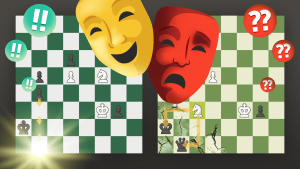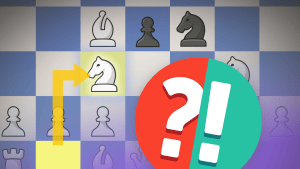
Openings for Tactical Players: Sokolsky Opening
The Sokolsky Opening (1. b4) never enjoyed much popularity , which can partially explain it's nickname "Orangutan Opening". In my opinion, there are two reasons why most chess players never seriously consider this opening. The first reason is that if Black plays correctly, then White cannot achieve an opening advantage which he can get in most openings. And another reason is that there exists almost no theory for this opening (and most chess players like to play openings they can learn from books). But for certain chess players the lack of opening theory is actually a big positive for an opening. Think about it for a moment. You are playing your club mate rated, say 2100. If you choose to play a mainstream opening, then you can expect your opponent to play the theoretical moves that he learned from books, magazines and databases. And in most cases, the opening theory is based on the games and analysis of GMs and IMs. So, even though you are playing a 2100 player, in the opening of the game you are actually playing against a GM or an IM. Therefore, some chess players prefer to play the openings where their opponents are forced to think from the very first moves. The Sokolsky Opening is one such opening. The idea of the opening is quite simple: by playing 1.b4 White fianchettoes his dark squared Bishop to pressure along the a1-h8 diagonal and also tries to grab as much space on the Queen's side as possible.
Usually in the Sokolsky Opening by move 3 or 4 you get positions that don't resemble any other opening. Most chess players find it difficult to play with no clear guidelines and that can probably explain the big number of short games in this opening. Let's look at some possible Black responses.
Most chess players after 1. b4 e5 2. Bb2 don't want to trade their central e5 pawn for White's wing pawn b4 (after 2...Bxb4 3. Bxe5). And since the typical defensive opening move 2...Nc6 doesn't work here due to 3.b5, and 2...d6 blocks the Bf8 and doesn't threaten Bxb4 anymore, 2...f6 looks like a natural choice. Meanwhile, in this case White has an opportunity to play an extremely dangerous gambit that starts with 3. e4! How dangerous is it? Well, in the next game one of the strongest Soviet IMs had to resign as early as move 11!
(Just like in all my articles I give you a chance to test your attacking skills, so the games are given as a Quiz. Please remember that you can always replay the whole game from the first move if you click "Solution" and then "Move list".)

